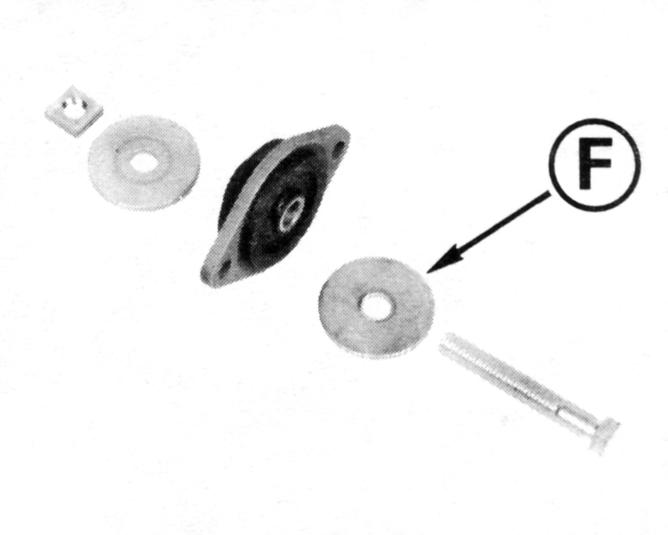
2 minute read
Cable Installation
1.Turn the steering wheel to fully extend the steering cable ram to its maximum extension. Lubricate the full length of the steering cable ram with Volvo Penta Grease.
2.Retract steering cable ram and insert ram through valve.
3.Hold steering cable anchor nut back on cable casing to make certain the steering cable is comple tely seated in end of valve.
4.While holding steering cable tight against valve, thread steering cable anchor nut onto valve until snug.
Lubrication
5.Hold cable tube with a 22 mm wr ench on the flat. Attach a crowfoot wrench at 90° to a torque wrench and tighten the steering cable to the cable anchor nut to 120 in. lb. (14 N•m).
Hoses
6.Align cable ram with steering cylinder clevis and install small pin from top of clevis. Secure small pin by installing and spreading ends of cotter pin.
7.Fill system with fluid and remove all air. See “Purging Air From Steering System” on page103.
Warning!
Ensure all steering system cotter pins are properly installed and secure.
Lubricate the steering ram with Volv o Penta Grease every 50 hours or once a season, which ever comes first.
Due to local conditions, it may be necessary to lubricate your steering ram at more frequent intervals.
Caution!
Do not start engine with any power steering hose disconnected.
The pump output fitting has metric threads. Do not attach a hose with SAE threads to the pump fitting.
After connecting power steering hoses, make sure that there’s ample clearance between the hoses and driv e belts and other components. Hoses installed out of position may rub during operation and be damaged.
If fluid return hose is removed at pump, be sure to use a “worm drive” clamp when reinstalling it.
System Diagnosis
Complaints of faulty steering are frequently the result of problems other than the steering cylinder asse mbly or pump. Conditions such as hard or loose steering, or vibrations , are often related to such factors as the drive belt; pump and cylinder m ounting; fluid level; or incorrect installation of the steering cable. These factors should be checked and corrected before disassembling or r eplacing parts of the steering system.
System Checks
Many factors affect power operation of the steering system. Some of the most common problem areas are:
•Fluid level.
•Loose or worn drive belt, or oily belt.
•Steering cable jammed against something in boat at stern.
•Steering cable too short or steering cable too long.
•Loosely mounted components.
•Loose pump pulley.
Tie Bar Adjustment - Twin Engine Installation
On deep Vee shaped boat hulls, a toe-in condition should be created for improved performance and effici ency. A commonly used toe-in condition is one in which dimension (1) will be 1/4 to 3/8 in. (6,35 to 9,53 mm) less than dimension (2).
NOTE!Hold tension on the sterndrives when measuring.
Remove the steering tie bar from th e port tiller arm. Loosen jam nut (3). Turn jam nut out 1/16 to 3/32 in. (1,59 to 2,38 mm) as required, and screw in steering tie bar end. Retighten the jam nut.
Caution!
Threads of the port tie bar must be visible through the inspection hole (5) to insure adequate thread engagement between the rod and tube. Failure to ensure proper threads engagement could result in co mponent failure resulting in possible loss of steering control.




